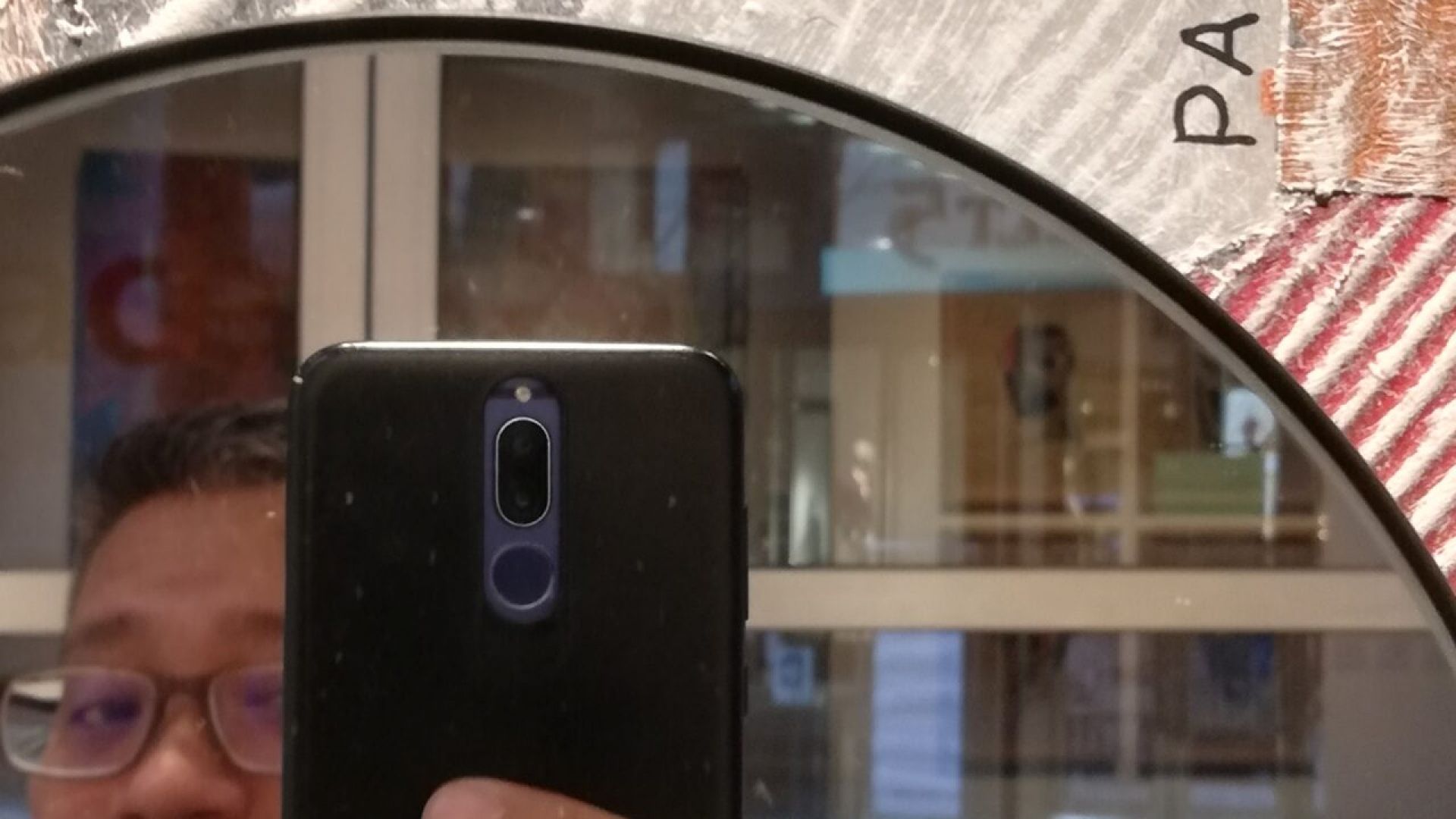What do you see when you face a mirror? Is it the face you want others to see you, the face you actually have and created to represent your identity, or the face that is the result of how others have seen us?

Elmer O Dumlao’s KAMUKHAMO (FACE THE TRUTH; TRUTH IS IN YOUR FACE) dares to answer these questions in twenty-one mixed media abstractions of faces.
Four are massive constructs of present-day preoccupations, most are like Rorschach inkblots that confront us to see what we don’t see or want to see.
But Dumlao doesn’t leave audiences lost to themselves, grappling at abstractions and expressive strokes. His background as an advertising art director and graphic artist uses the power of words, too, to bolster his message.
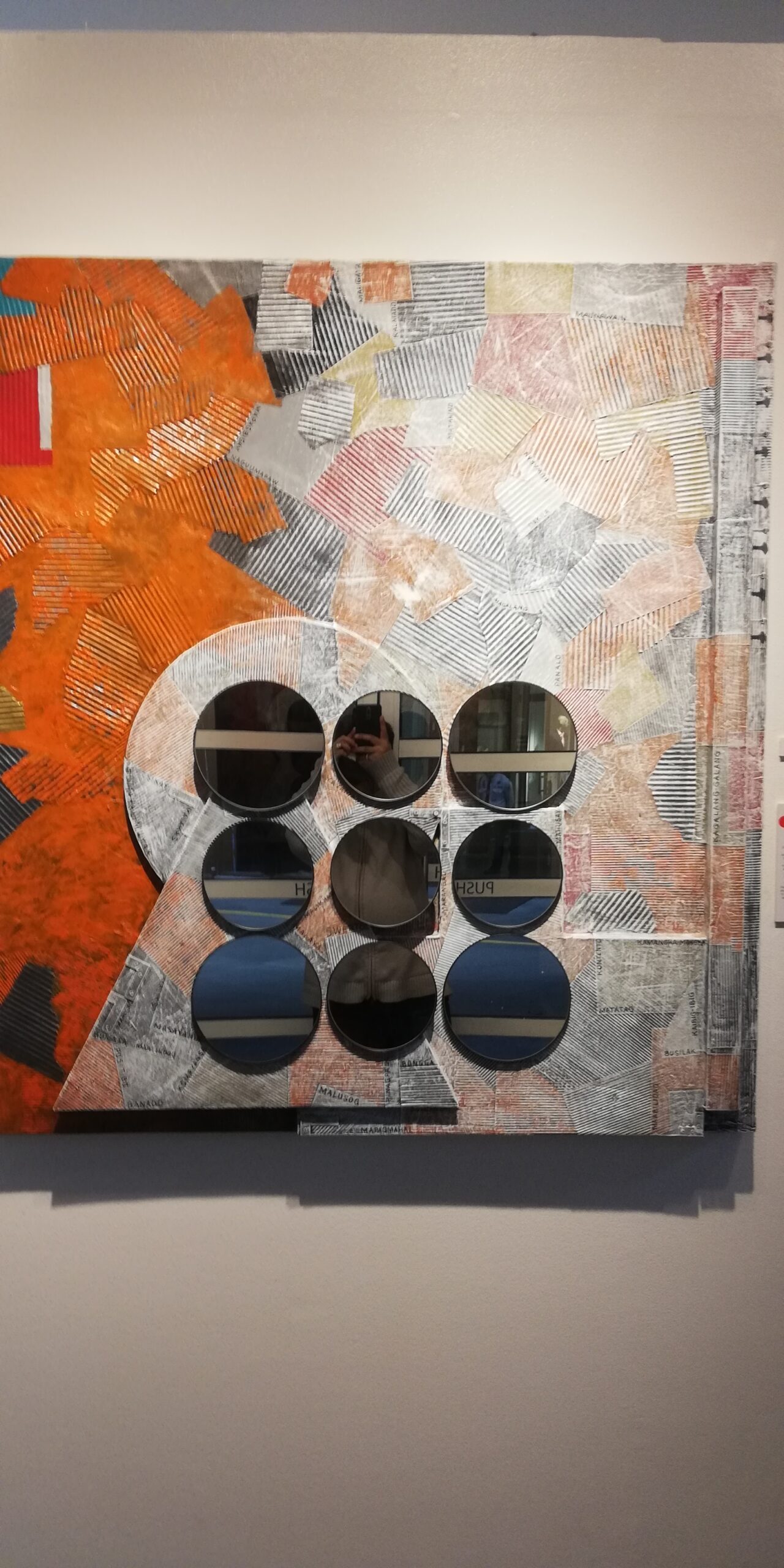
Our mirror image: The face we want others to see
KAMUKHAMO’s center piece, the first work that audiences face upon entering the exhibit space is “Salamin” (132.84 x 121.92 cm, mixed media, 2022).
We see a massive work of wavy lines in metallic sheen, glossy and glamorous, and nine mirrors of varying sizes arranged in square formation: each circle capturing an aspect of ourselves. One highlights our waistline, another our sleeves, another the color of our pants, one our hair.
“Salamin” poses the essential question: “What do we see?” And in seeing parts and parcel of a whole, we take on a mindset of noticing parts and parcel of objects as essential to the whole.
We see others as we want to see them. Based on whether they are KAMUKHAMO, “like ourselves” or “how we like ourselves to be” or “like others who we remotely like.”
“We cannot help but judge people,” says curator Abe Orobia, artist-educator and one of this year’s Ten Outstanding Young Men honorees, attesting to judgment as human nature: most often pointed to others, but more so to the self.
“Salamin” makes us conscious of how we judge, from the way we see ourselves to how others would see us, with the mirror standing for the eye of others, and ultimately, to how we want to be seen.
But, colors and mirrors and self-images aren’t all, for as we look closer, we see words inscribed on the work: malakas/strong, masayahin/happy, malusog/healthy, swerte/lucky, mahusay/good, humahalimuyak/fragrant, panalo/winner.
Positive, hidden amid the colors, these are affirmations of how we create our public image, our aspirations, how we want others and ourselves to be.
“Salamin” is a mystical mantra of circles and powerful, essential words. Audiences are forewarned to see themselves positively before they face some ugly truths.
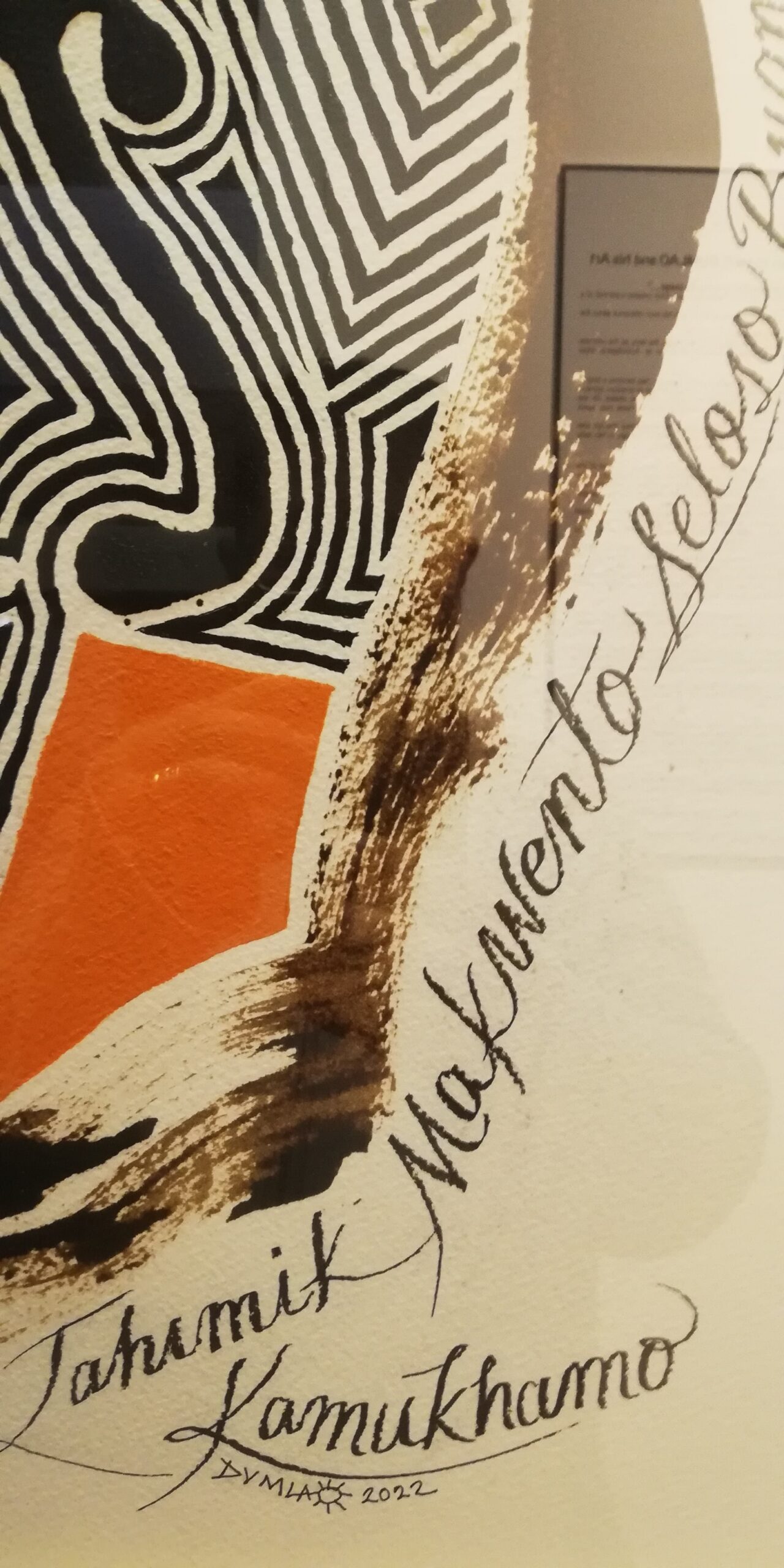
The images we see in the inkblots: Confronting our fears
Not all the works in KAMUKHA are as explicit as “Salamin,” most are enigmatic expressions of what might as well be portraits. Strangely unfamiliar and defamiliarized, even grotesque.
The “Kamukhamo Series” is an interesting variations on the theme, which is we see level up with works that are titled no-holds-barred with disarmingly harsh words.
Except for “Maamo”/tame, we see “Sumbongera,” “Gusgusin,” “Butangera,” and “Haliparot” in 76.20 x 60.69 cm, mixed media on Arches paper300 gsm acid-free paper encased in natural wood frame and glass.
Words we would rather not be called, but at times we so easily slip into saying. We frame the ugly truth in glass to keep them from coming out as hard and acidic, from infecting our self-image and self-concept.
We need to protect ourselves from what could easily become us.
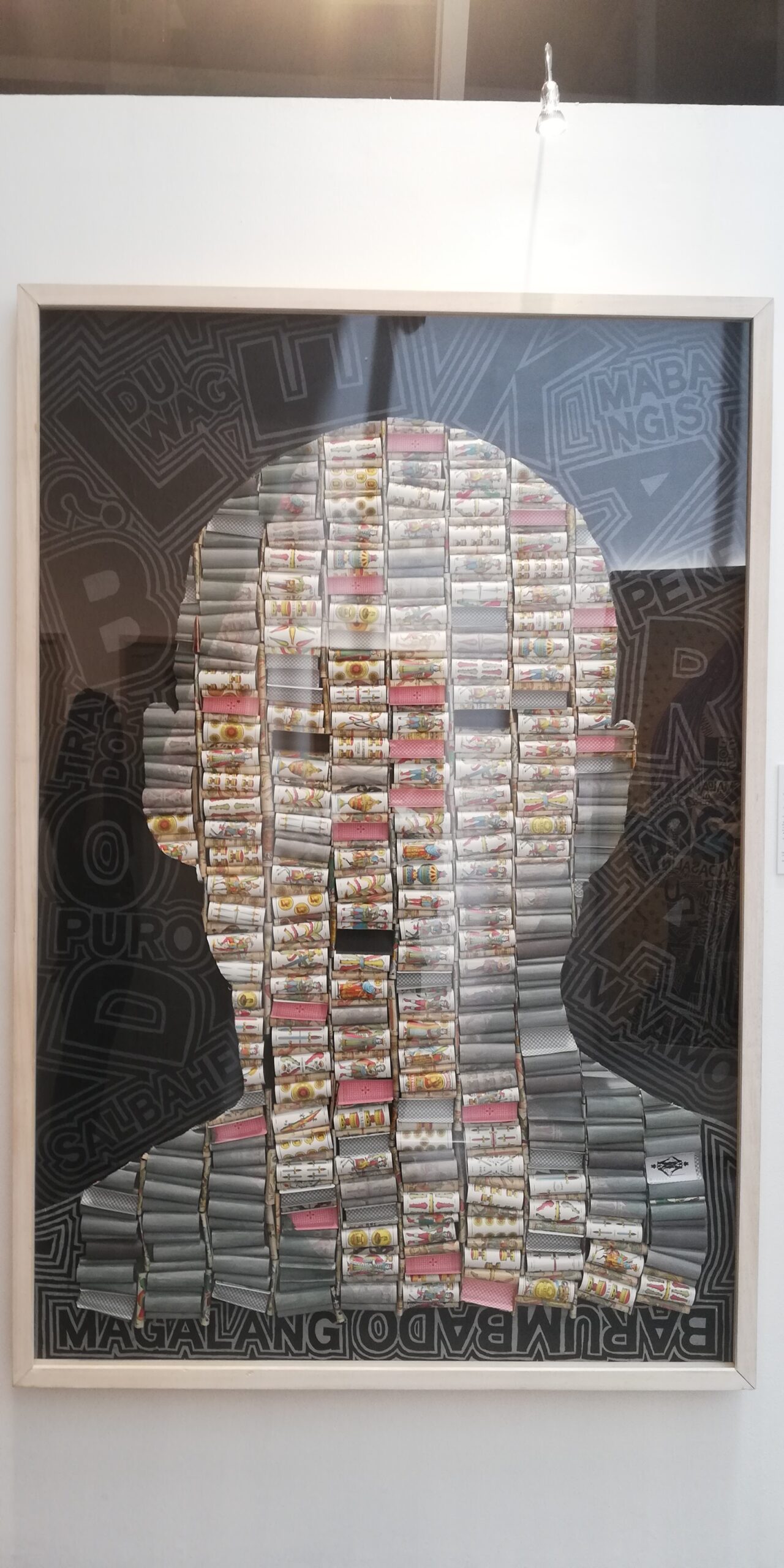
The words become us: Constructing ourselves
Three other big works dominate the show, and my favorite is called “Doble Kara” (180.84 x 121.92 cm, mixed media, 2022), a giant outline of a man created using a deck of cards!
Palatial in magnitude as Dumlao is Royal Protocol of the Royal Palace of Amman, Jordan, the work creates the image using a combination of cards facing up and down. This interesting strategy conveys how our mirror image, our public visage, is combination of both our private self and the self we project ourselves to be.
The words, thus, are a mélange of opposites and juxtapositions, pairing magalang/respectful with barumbado/ill-tempered. The psyche, the personality, the person, after all, isn’t pure good, not even pure.
Not in equal measure, but in a constant flux of facing up and facing down, perhaps as situation dictates, perhaps as our feelings dictate.

The other wall-size works that juxtapose words are “Brusko” (180.34 x 121.92 cm, mixed media, 2022), an interesting play of words and colors—aquamarine and mandarin—spelling out traits like maginoo/gentlemanly, bastos/rude, with bigatin/bigtime and pormal/formal; “Workaholic” (132.34 x 121.92 cm, mixed media, 2022) composed of used coffee cups, in various stages of staining, with words like puyat/sleepless alongside umento/raise; and, “Nagmumurang Kamias” (180.34 x 121.92 cm, mixed media, 2022), that combine such terms at retokada/has had aesthetic surgery and edukada/educated.
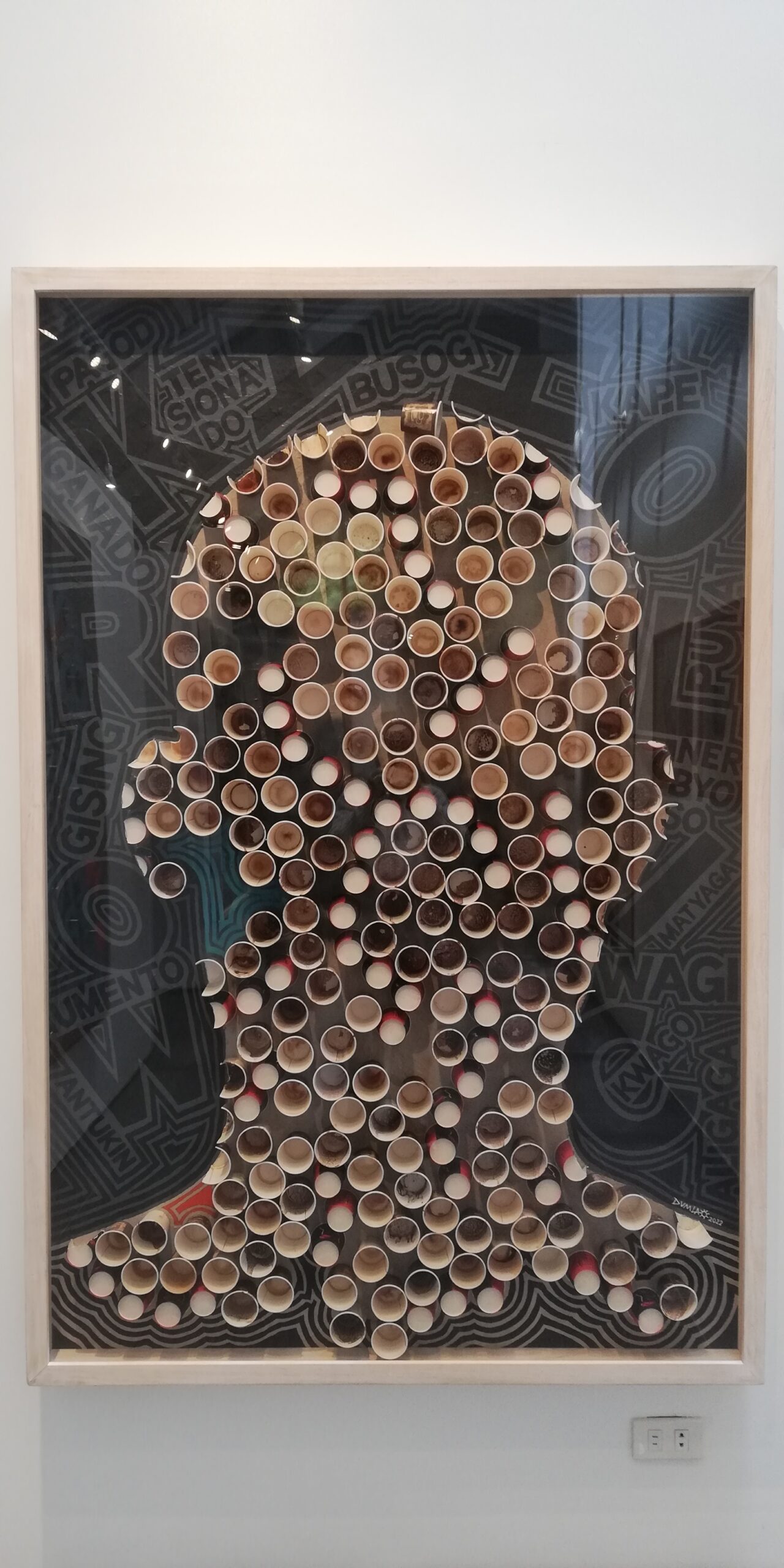
Indeed the world around us is a world of images, faces, and words that all play a part in defining, constructing, and manipulating our sense of self, our self-image, and, ultimately, our identity.
“KAMUKHAMO is a passive judgment at how quickly we dismiss and arrive at conclusions,” Orobia says.
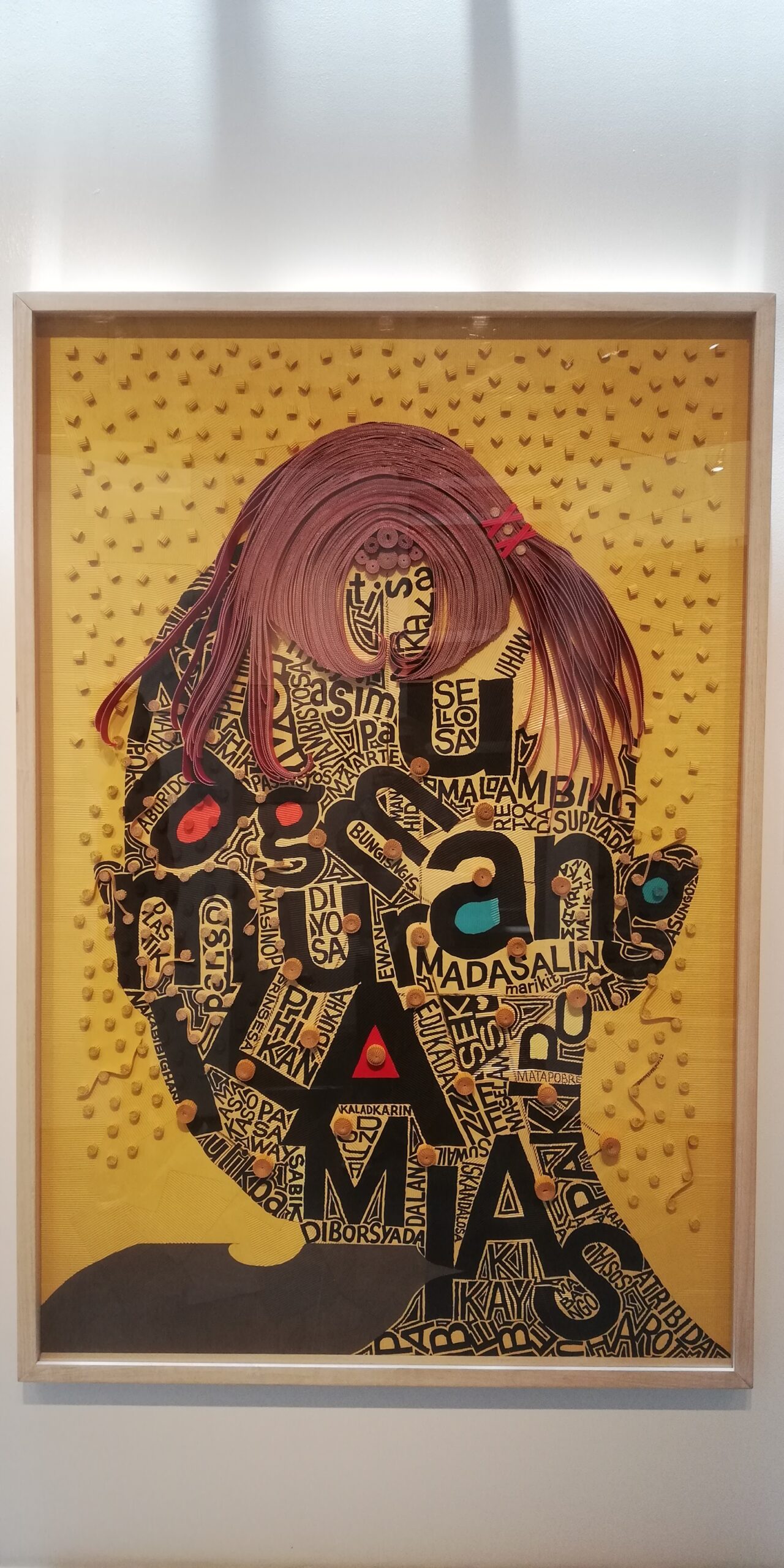
And here is where Dumlao’s power as an artist-art director lies: manipulating the mind’s eye to see things differently, deeply, until we begin to accept that what we see—if you look at the paintings closely, read—become truths that become part and parcel of our own identity.
Dumlao isn’t bombarding us with words that we should shun or claim, he is exposing us necessarily to these words, like vaccines, to protect ourselves from sliding into to the path of falling into stereotypes, being holier than thou, and too easily judging books with having read them or ourselves fully to understand.
***

KAMUKHAMO is Elmer Dumlao’s twelfth one-man exhibit since his first solo show in 2010 at the Zara Gallery in Amman, Jordan. His fourth show in Manila follows Art Anton’s “Mind Games” in 2021.
Catch KAMUKHAMO from April 15 (Friday) to May 28 (Saturday) at ArtistSpace, Ground Floor, Ayala Museum Annex in Greenbelt Park, Makati City.
KAMUKHAMO is Ayala ArtistSpace’s first collaboration with the UST Atelier Alumni Association, Inc, and The Artologist Gallery.
Check www.theartologist.net or visit @artologist on Facebook or @the_artologist on Instagram.
For inquiries, call Ron de Castro at 0917-840-3585 or email theartologist@yahoo.com.
#ArtExpands #HappeningPH #ElmerODumlao #ElmerDumlao #AmmanJordan #JordanbasedFilipinoartist #filipinoartist #USTAtelierAlumniAssociation #TheArtologist #ArtistSpace #KAMUKHAMO #faces #mixedmedia #painting #visualart #artdirector #filipinopainter #filipinoartist #filipinovisualartist #filipinooverseasartist #USTartist #AbeOrobia #CidReyes #JetRai #ElmerDumlao

